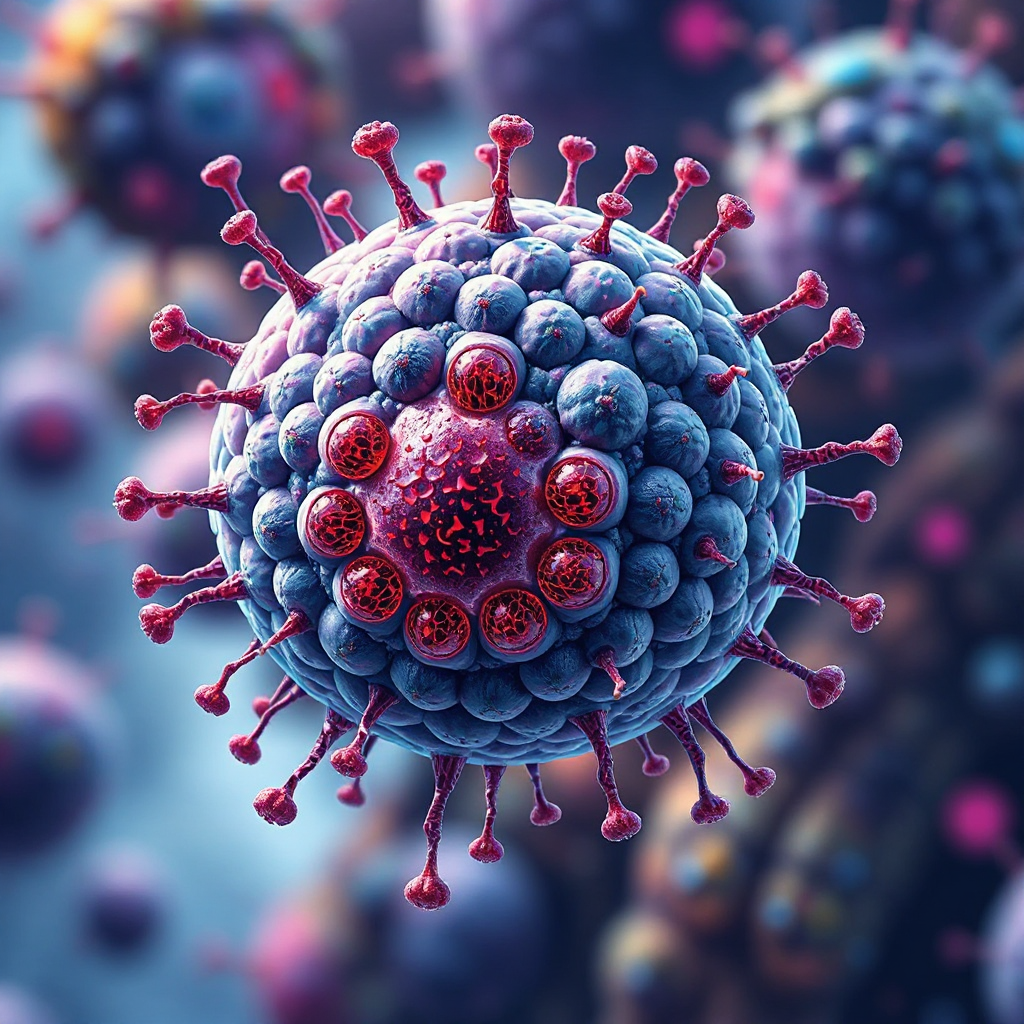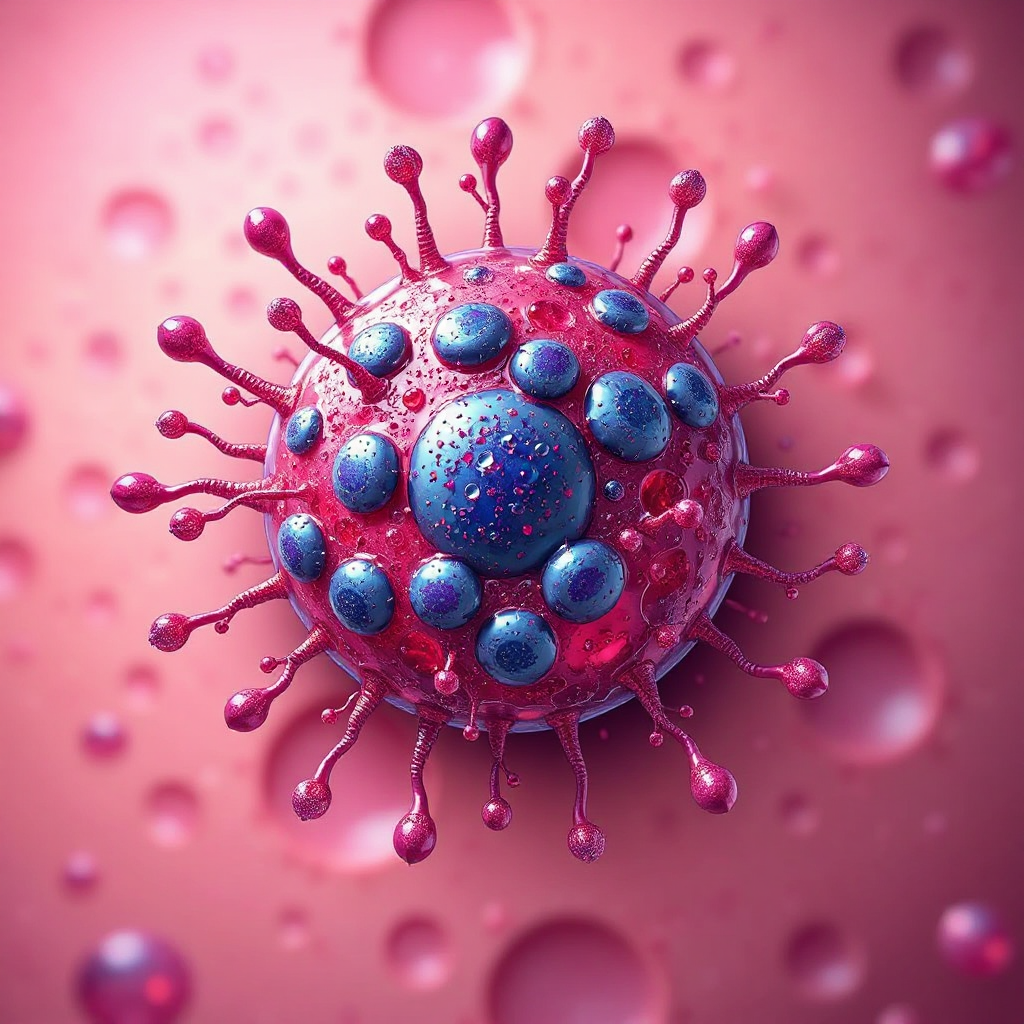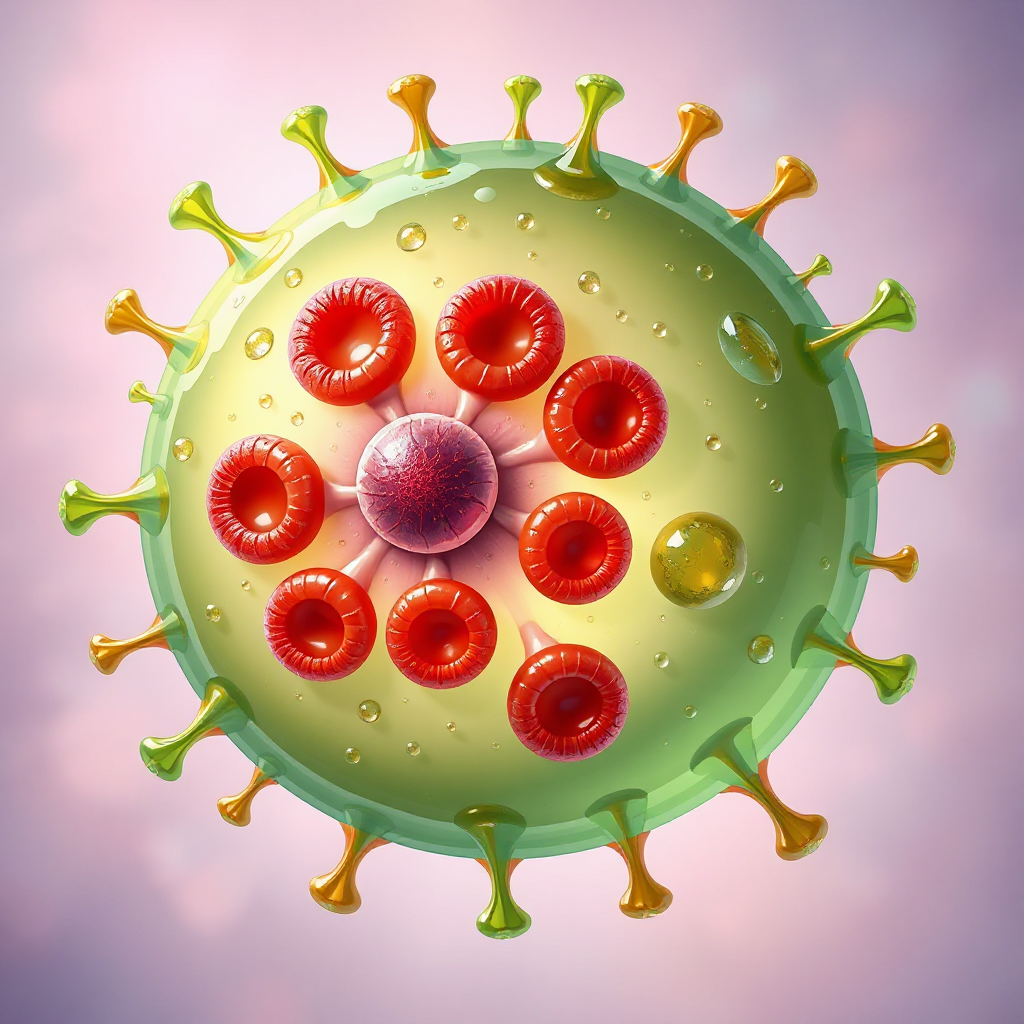Understanding Primary Cutaneous Follicle Center Lymphoma

Primary cutaneous follicle center lymphoma is a type of non-Hodgkin lymphoma that develops in the skin. Unlike systemic lymphomas, it rarely spreads to lymph nodes or other organs. You can recognize it by its unique histological features, such as dense clusters of centrocytes and centroblasts in the dermis. This condition grows slowly and typically remains localized, making it distinct from more aggressive lymphomas. Doctors classify it as a low-grade lymphoma, which means it often responds well to treatment and has a favorable prognosis.
Key Takeaways
Primary cutaneous follicle center lymphoma mostly affects white men aged 50-60.
It usually shows up as skin spots and has a 5-year survival rate over 95%.
Check-ups every six months help find problems early.
Treatments like radiation or surgery can make the disease go away.
If your skin looks strange, see a doctor quickly for help.
Who Is Affected by Primary Cutaneous Follicle Center Lymphoma?
Demographics
Age and Gender Prevalence
Primary cutaneous follicle center lymphoma most commonly affects middle-aged adults. You are more likely to encounter this condition if you are between the ages of 50 and 60. It rarely occurs in children or young adults. In fact, a study in the United States found that only 10.4% of cases involved individuals under 20 years old. The annual incidence rate for this younger group is just 0.12 per one million people, highlighting how uncommon it is in younger populations.
Gender also plays a role in the prevalence of this condition. Men are more frequently diagnosed than women. If you are a middle-aged white man, your risk of developing this lymphoma is higher compared to other groups.
Geographic and Racial Distribution
This type of lymphoma predominantly affects white individuals. If you belong to this racial group, particularly in Western countries, you may have a higher likelihood of developing the condition. The disease is less common in other racial or ethnic groups, though cases can still occur worldwide.
Geographically, primary cutaneous follicle center lymphoma appears more frequently in regions with predominantly white populations. However, the exact reasons for this distribution remain unclear. Researchers continue to study whether genetic or environmental factors contribute to these patterns.
Causes and Risk Factors of Primary Cutaneous Follicle Center Lymphoma
Causes
Genetic Mutations
Genetic changes play a significant role in the development of primary cutaneous follicle center lymphoma. Many cases show a specific genetic alteration called the t(14;18)(IGH;BCL2) translocation. This mutation involves the BCL2 gene, which helps regulate cell death. When this gene becomes altered, it can lead to uncontrolled cell growth. Additionally, some lymphomas expressing the BCL2 protein may also have deletions in a region of chromosome 1, known as 1p36. These genetic abnormalities disrupt normal cell behavior and contribute to the formation of lymphoma.
Environmental Factors
Environmental factors may also influence the development of this condition. While researchers have not identified specific triggers, exposure to certain chemicals or prolonged ultraviolet (UV) radiation could play a role. If you work in industries involving chemical exposure or spend excessive time in the sun without protection, you might face a higher risk. However, more studies are needed to confirm these links.
Risk Factors
Family History
Your family history can increase your likelihood of developing primary cutaneous follicle center lymphoma. If close relatives have had lymphoma or other blood cancers, you may inherit genetic traits that raise your risk. While this does not guarantee you will develop the condition, it highlights the importance of knowing your family’s medical history.
Immune System Disorders
A weakened or compromised immune system can also raise your risk. Conditions like HIV/AIDS or autoimmune diseases may impair your body’s ability to regulate abnormal cell growth. If you take immunosuppressive medications after an organ transplant, your risk may also increase. Keeping your immune system healthy can help reduce this risk.
Clinical Features and Complications of Primary Cutaneous Follicle Center Lymphoma

Clinical Features
Appearance of Skin Lesions
When you have primary cutaneous follicle center lymphoma, the skin lesions often appear as solitary or grouped plaques, nodules, or tumors. These lesions may look pink, violaceous, skin-colored, or erythematous. Unlike other skin conditions, they usually do not itch or ulcerate.
The table below summarizes the typical clinical features:
Clinical Feature | Description |
|---|---|
Lesion Type | Solitary or grouped plaques, nodules, or tumors |
Appearance | Pink, violaceous, skin-colored, or erythematous |
Itchiness | Usually not itchy and do not typically ulcerate |
Common Locations | Scalp, forehead, trunk; rarely on lower limb |
Scalp Lesions | May present as a patch of hair loss and telangiectases |
Distinct Variant | Crosti lymphoma or reticulohistiocytoma of the dorsum |
Miliary Presentation | Numerous scattered or clustered firm erythematous papules on forehead/cheeks |
Dissemination | Can be disseminated in 10-20% of cases |
Dermoscopy | Non-specific findings |
Commonly Affected Areas
You are most likely to notice these lesions on the scalp, forehead, or trunk. In some cases, they may appear on the lower limbs, but this is less common. Scalp lesions can sometimes cause hair loss or show visible blood vessels (telangiectases).
Complications
Risk of Systemic Progression
Although primary cutaneous follicle center lymphoma typically remains localized, there is a small chance of systemic progression. About 5-10% of cases may spread to lymph nodes or the bone marrow. Rarely, the condition can transform into a more aggressive form, such as diffuse large B-cell lymphoma.
Secondary Infections
Skin lesions can make you more vulnerable to secondary infections. Open or damaged skin areas may allow bacteria to enter, leading to complications. Keeping the affected areas clean and monitoring for signs of infection can help reduce this risk.
Diagnosis and Differential Diagnoses of Primary Cutaneous Follicle Center Lymphoma
Diagnostic Process
Clinical Examination
Your doctor will begin by examining your skin lesions. They will assess the size, shape, color, and distribution of the lesions. If you have lesions on the scalp, they may check for hair loss or visible blood vessels. A thorough physical examination helps identify any enlarged lymph nodes or other signs of systemic involvement.
Biopsy and Histopathology
A biopsy is essential for diagnosing primary cutaneous follicle center lymphoma. During this procedure, your doctor removes a small sample of the affected skin for microscopic analysis. Pathologists look for specific histopathological features, such as dense clusters of centrocytes and centroblasts in the dermis. The table below highlights key findings observed in biopsies:
Feature | Description |
|---|---|
Proliferation | Dense dermal and subcutaneous proliferation of centrocytes and centroblasts |
Growth Pattern | Follicular and/or diffuse growth pattern |
Grenz Zone | Separation from the epidermis by a grenz zone |
B-cell Markers | Positive for CD19, CD20, CD22, CD79a, PAX5, bcl-6, or CD10 |
bcl-2 Expression | Negative bcl-2 protein expression |
Additional diagnostic tools include blood tests, imaging, and advanced techniques like fluorescence in situ hybridization (FISH) and genetic testing. The table below summarizes these methods:
Diagnostic Tool | Description |
|---|---|
Blood tests | Full blood examination, metabolic panel, and serology for infections |
Imaging | PET/CT scans of the chest, abdomen, and pelvis |
Bone marrow biopsy | To assess for bone marrow involvement |
Lymph node biopsy | If an enlarged node is detected |
FISH | Detects genetic abnormalities |
Genetic testing | Identifies specific genetic mutations |
Histologic confirmation | Microscopic examination of tissue samples |
Immunophenotyping | Analyzes proteins expressed on cell surfaces |
Polymerase chain reaction (PCR) | Amplifies and analyzes DNA sequences |
Differential Diagnoses
Other Cutaneous Lymphomas
Primary cutaneous follicle center lymphoma can resemble other types of cutaneous lymphomas. These include cutaneous T-cell lymphoma, secondary cutaneous lymphoma, and primary cutaneous marginal zone lymphoma. Each of these conditions has unique features that help distinguish them during diagnosis.
Benign Skin Conditions
Some benign skin conditions mimic this lymphoma. These include rosacea, acne, folliculitis, insect bites, and cutaneous lymphoid hyperplasia. Malignant conditions like basal cell carcinoma and Merkel cell carcinoma may also appear similar. Your doctor will use biopsy results and other diagnostic tools to rule out these possibilities.
Tip: Early and accurate diagnosis ensures the best treatment outcomes. If you notice unusual skin lesions, consult a dermatologist promptly.
Treatment Options for Primary Cutaneous Follicle Center Lymphoma

Standard Treatments
Radiation Therapy
Radiation therapy is one of the most effective treatments for primary cutaneous follicle center lymphoma, especially for solitary or few contiguous lesions. It works by targeting and destroying abnormal cells in the affected area. Many patients achieve complete clearance of skin lesions after treatment. However, recurrences may occur in different locations, which do not usually affect the overall prognosis.
Low-dose radiation therapy (LDRT), such as 4 Gy, has gained popularity due to its high response rates and reduced side effects. Studies recommend this approach for its effectiveness and minimal toxicity.
Study | Findings |
|---|---|
EORTC/ISCL consensus | Radiation therapy is effective for solitary or few contiguous lesions. |
Low-dose RT (4 Gy) | High response rates with reduced acute toxicity. |
Surgical Excision
Surgical excision is another standard treatment, particularly for solitary lesions. This method involves removing the lesion entirely, often resulting in a nearly 100% complete remission rate. For patients with localized disease, surgery offers a curative option with minimal risk of recurrence.
If you have a solitary lesion, your doctor may recommend surgical excision or radiation therapy as the first-line treatment. Both approaches aim to eliminate the lymphoma while preserving your quality of life.
Advanced Cases
Systemic Therapies
For advanced cases or disseminated lesions, systemic therapies become necessary. Rituximab, a monoclonal antibody targeting CD20 on B-cells, is a common choice. It can be used alone or combined with chemotherapy regimens like CHOP (cyclophosphamide, hydroxy doxorubicin, vincristine, and prednisone) or R-CHOP (rituximab with CHOP). These combinations enhance response rates and help control widespread disease.
If your condition involves multiple lesions or systemic progression, systemic therapies provide a comprehensive approach to treatment. They target lymphoma cells throughout the body, improving outcomes for advanced cases.
Emerging Treatments
Emerging treatments offer new hope for managing primary cutaneous follicle center lymphoma. Low-dose radiotherapy (LDRT) continues to show promise, with high response rates and fewer side effects. Topical therapies, such as clobetasol, nitrogen mustard, and imiquimod, are effective for localized lesions. Intralesional treatments, including triamcinolone and rituximab, serve as second-line options for patients with multiple lesions.
The "wait-and-see" strategy is another approach for indolent cases. This method involves monitoring the condition until symptoms worsen, allowing you to avoid unnecessary treatments and their side effects.
Treatment Option | Description | Effectiveness |
|---|---|---|
Low-dose Radiotherapy (LDRT) | 4 Gy treatment with high response rates and reduced acute toxicity. | High response rates |
Topical therapies | Includes clobetasol, nitrogen mustard, cryotherapy, and imiquimod. | Good response rates |
Intralesional treatments | Use of triamcinolone, interferon α, or rituximab for localized lesions. | Effective as second-line treatment |
Surgical resection | Complete surgical resection preferred for solitary lesions. | Nearly 100% complete remission rate |
Wait-and-see strategy | Observation until systemic symptoms appear. | Effective in indolent lymphomas |
These emerging options expand the range of treatments available, ensuring that you receive care tailored to your specific needs.
Prognosis and Follow-Up for Primary Cutaneous Follicle Center Lymphoma
Prognosis
Survival Rates
If you have primary cutaneous follicle center lymphoma, the prognosis is generally excellent. The overall 5-year survival rate exceeds 95%. However, the location of the lesions can influence outcomes. For example, lesions on the leg are associated with a significantly lower 5-year survival rate of around 41%. The table below highlights these survival rates:
Condition | 5-Year Survival Rate |
|---|---|
Primary cutaneous follicle center lymphoma (overall) | >95% |
Involvement of the leg | 41% |
Prognostic Factors
Several factors can affect your prognosis. The Cutaneous Lymphoma International Prognostic Index (CIPI) score is a key tool used to predict outcomes. Patients with low-risk scores have a 91% 5-year progression-free survival rate, while those with high-risk scores see this rate drop to 48%. The table below summarizes these findings:
Risk Factor | 5-Year Progression-Free Survival Rate | P-Value |
|---|---|---|
Low Risk (CIPI Score) | 91% | 0.001 |
Intermediate Risk (CIPI Score) | 64% | |
High Risk (CIPI Score) | 48% |
Follow-Up Care
Regular Monitoring
Regular follow-up care is essential for managing primary cutaneous follicle center lymphoma. You should visit your doctor every six months for a complete skin examination and lymph node palpation. These check-ups help detect any new lesions or signs of systemic progression early.
Follow-up intervals: Every 6 months.
Includes: Complete skin and lymph node examination.
Managing Recurrences
Recurrences are possible, even after successful treatment. If you experience a recurrence, the management approach depends on the number and location of lesions. For solitary lesions, surgical excision or radiation therapy is highly effective. For multiple lesions, options include cryotherapy, intralesional steroids, or rituximab. In cases of widespread disease, systemic therapies like R-CHOP chemotherapy may be necessary.
Here are some common strategies for managing recurrences:
Surgical Excision: Ideal for solitary lesions.
Radiation Therapy: Effective for localized recurrences.
Topical Therapies: Includes corticosteroids and other agents.
Intralesional Therapy: Involves injecting drugs directly into lesions.
Systemic Therapies: Recommended for disseminated lesions.
Tip: Regular follow-ups and early intervention can help you maintain a good quality of life and manage recurrences effectively.
Primary cutaneous follicle center lymphoma is the most common type of primary cutaneous B-cell lymphoma, accounting for 50% of cases. It primarily affects middle-aged white men and rarely occurs in children. This condition often presents as localized skin lesions and has an excellent prognosis, with a 5-year survival rate exceeding 95%. However, lesions on the leg may lower this rate to around 40%.
You should feel reassured knowing that with proper care, most patients achieve favorable outcomes. Regular follow-ups every six months, including skin and lymph node examinations, are essential for early detection of recurrences or complications. If you notice unusual skin changes, consult a healthcare professional promptly for personalized guidance.
Note: Early diagnosis and treatment can significantly improve your quality of life and long-term outcomes.
Key Point | Description |
|---|---|
Commonality | PCFCL is the most prevalent type of primary cutaneous B-cell lymphoma, making up 50% of cases. |
Demographics | Primarily affects middle-aged white men (ages 50-60), rare in children. |
Prognosis | Excellent prognosis with a 5-year survival rate of over 95%, but 40% if leg involvement occurs. |
Follow-up | Recommended every 6 months with complete skin examinations and lymph node checks. |
Complications | Skin recurrence (30-40%), possible spread to lymph nodes or bone marrow (5-10%), and rare transformation to diffuse large B-cell lymphoma. |
FAQ
What is the difference between primary cutaneous follicle center lymphoma and systemic lymphoma?
Primary cutaneous follicle center lymphoma affects only the skin and rarely spreads to other organs. Systemic lymphoma involves lymph nodes and can spread throughout the body. The former grows slowly and has a better prognosis.
Can primary cutaneous follicle center lymphoma be cured?
Yes, many cases respond well to treatment. Radiation therapy or surgical excision often leads to remission. Regular follow-ups help manage recurrences and maintain long-term health.
How can you differentiate this lymphoma from other skin conditions?
A biopsy is the most reliable method. It identifies specific histological features unique to this lymphoma. Your doctor may also use imaging or blood tests to rule out other conditions.
Is this condition contagious?
No, primary cutaneous follicle center lymphoma is not contagious. It develops due to genetic mutations or other internal factors, not through contact with others.
What should you do if you notice unusual skin lesions?
Consult a dermatologist immediately. Early diagnosis ensures better treatment outcomes. Avoid self-diagnosing or delaying medical care, as this could lead to complications.
Tip: Keep track of any changes in your skin and share them with your doctor during check-ups.
See Also
Exploring Mycosis Fungoides: A Type of Skin Lymphoma
Follicular Lymphoma: Definition and Key Symptoms Explained
A Comprehensive Guide to Diffuse Large B-Cell Lymphoma
Cutaneous T-Cell Lymphoma: Overview and Symptom Insights
B-Cell Prolymphocytic Leukemia: Simplified Explanation and Insights
